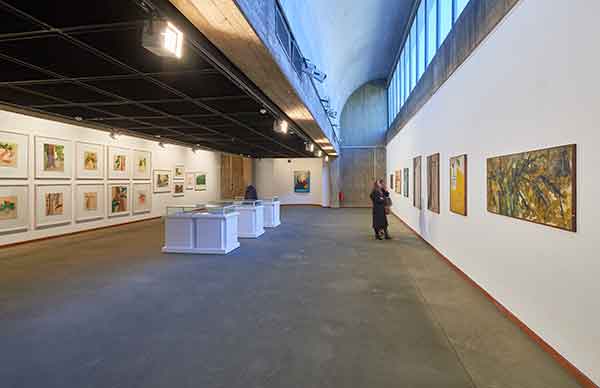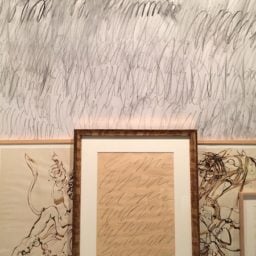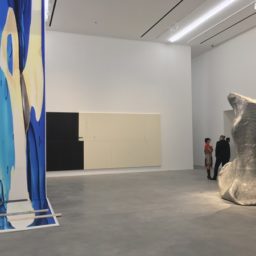A sensual Picasso painting of figures and an airbrushed portrait of the Ayatollah Khomeini are the first things you see inside the imposing storage vault buried beneath the Tehran Museum of Contemporary Art.
It is hard to imagine a more unlikely pairing, the work of the greatest iconoclast of the 20th century next to the work of a man who imposed a medieval caliphate on what was then—and still is—the most cosmopolitan and sophisticated culture in the Middle East.
But then again Iran remains a frightening, if fascinating, bundle of contradictions.
We all know the Iran from the news: It’s an ugly, belligerent Muslim state that locks up reporters, denounces the US and Israel, and yet educates and promotes women and is proud of its cultural, religious, and ethnic diversity. It’s also a society closed to the outside world in which hospitality is an art form and visitors are graciously welcomed.
Iran is possibly the most bizarre and contradictory place on earth.
So to find an estimated $2 billion dollars worth of modern and postwar European and American art lining the racks at the Tehran Museum of Contemporary Art, several feet below ground, seems strangely normal in this abnormal place. It was bought with public money during the 1970s under the patronage of the Shah, whose oppressive and ultimately illegitimate rule ended abruptly with the Islamic revolution in 1979.
I’ve seen bits and pieces of the collection before, four years ago while reporting on the Tehran contemporary art scene for the New York Times. To say it’s impressive is an understatement. The depth and diversity of the holdings are nothing short of monumental—around 1400 words of classic European and American art.
The inmates here include Jackson Pollock, Francis Bacon, Mark Rothko, Alexander Calder, Claes Oldenburg, Pablo Picasso, Claude Monet, Cy Twombly, Andy Warhol, Alberto Giacometti, Donald Judd, Camille Pissarro, Morris Louis, Rene Magritte, Andre Derain, Henri de Toulouse Lautrec, Willem de Kooning, and on and on.
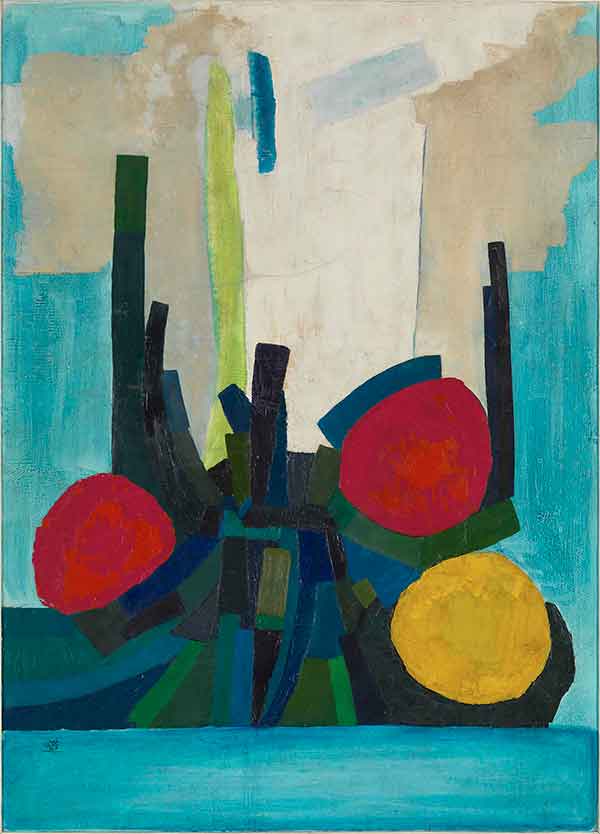
Farideh Lashai, Untitled (1967).
Image: Courtesy of the Collection of Centre Pompidou, Paris.
But this is not the reason for my most recent visit.
I came for something more extraordinary, a retrospective exhibition of the work of Farideh Lashai, a seminal Iranian modernist and the first female artist in at least a decade to receive an expansive presentation like this at the Tehran Museum of Contemporary Art. In and of itself, this is remarkable here and a hopeful sign of cultural liberalization. But even more extraordinary is that the show has been put together by an international curator, Germano Celant, with expert help from architect and curator Faryar Javaherian, and includes around a dozen works from the museum’s fabled collection of European and American art along with Iranian contemporaries.
It is commonly assumed to be a mistake to pair artwork of great masters with artists whose work comes later and therefore, strictly speaking, looks and feels stylistically derivative. In truth this is a function of our own narrow idea of art history and the assumption that there is a single, linear narrative of stylistic evolution that can be tracked across time and space linking artists and artworks together. Hence all of those Western art history textbooks tracing a path from Courbet to Rauschenberg. But art doesn’t get made that way.
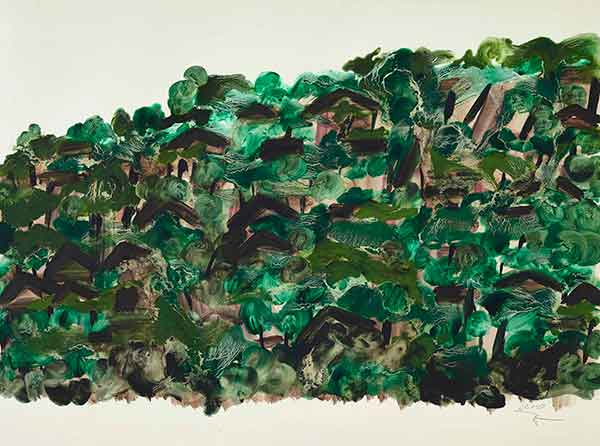
Farideh Lashai, Untitled (1975).
Image: Courtesy of Tehran Museum of Contemporary Art.
The most obvious problem with this kind of teleological approach to art history is that it simply doesn’t account for artists working in different times and places with different sets of social, cultural, and aesthetic reference points. For example, the early Chinese modern artists working in Shanghai in the first decades of the 20th century were impressed with 19th century European realism, which they considered to be ‘scientific’ (therefore modern) in contrast to their own tradition of more expressive ink and brush painting. In short, modernism for them meant the exact opposite of what it meant to European artists of the same period, who were moving away from realism and toward abstraction and expressionism, which to them was modern.
All artists borrow and blend ideas and images and have done so since the beginning of time. What matters is what they do with what they have to work with. The idea of blending and borrowing, moving through styles, influences and artistic idioms as needed, is at the heart of “Towards the Ineffable: Farideh Lashai,” which runs through February 26, 2016 at the Tehran Museum of Contemporary Art and in some ways defines the late artist’s approach to making art. I would define her work as an art of complexity but also an art of individuality and even identity rooted in her place of residence, Iran, as much as in her inner changing psychological and emotional states.
The exhibition is arranged chronologically, tracking her art and life from her birth along the lush Caspian Sea coast in 1944 to her death, prematurely, of cancer in 2013. She lived a very full life, as they say, navigating the perils and loss of revolution, exile, and return while all the while, like many artists, embracing a life devoted to literature, poetry, film and art. She also spent time as a political prisoner.
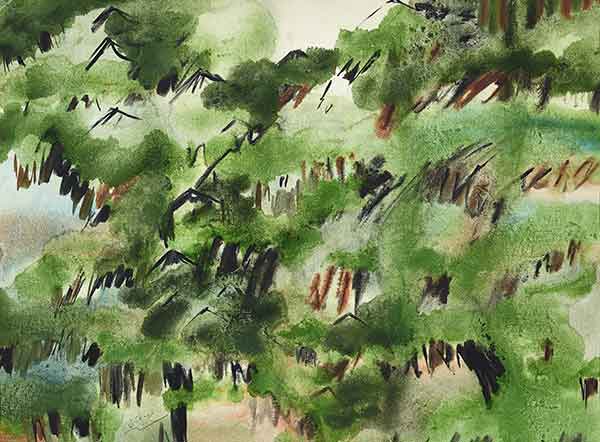
Farideh Lashai, Untitled (1977).
Image: Courtesy of the Tehran Museum of Contemporary Art.
The occasional inclusion in the show of artworks by Pollock, Rothko, Monet, Pissarro, Twombly and others provides a useful context for stylistic changes throughout the artist’s career. But it doesn’t help tremendously to understand her work. The real reference point for what Lashai was doing lies in the biographical material included at intervals throughout the show and in wall texts that provide the broad outlines of 20th century Iranian history.
Like all young artists growing up in the middle decades of the 20th century, Lashai learned to paint by copying the masters and her early works in this show reveal her as a prodigious talent. She could paint like Pissarro or Monet from an early age, making her obviously a candidate for a career as an artist, in spite of the fact that she was a young woman. The confidence it took to make that decision would remain with her throughout her life, but it also marked her as a rebel, a loner, even an outsider who struggled for social and cultural acceptance. No surprise she retreated into her own world.
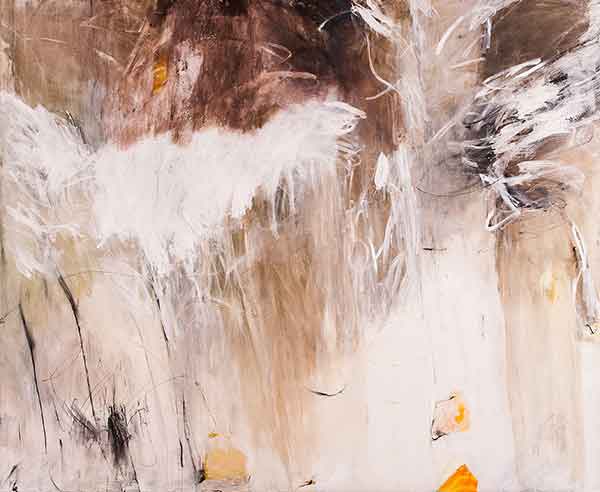
Farideh Lashai, Untitled (2005).
Image: Courtesy of the Farid Akhavi Collection, Tehran.
Lashai was essentially a landscape painter. Delightful still lifes of flowers and vases appear all through her career, but it is the safety and intimacy of close-up imagery of trees, flowers, gardens to which she returns time and again. She was a colorist at heart and seems to have preferred the raw immediacy of working directly with oil stick on paper, resulting in, during the 1970s, some outstanding works. Among them is an untitled abstracted oil-on-paper painting of trees, belonging to the Pompidou.
The dominant creative tension in the work is not entirely unlike that of many other artists of her era both in Iran and elsewhere—a tussle between realism and abstraction. She begins with realism, but finds her own voice in abstraction from the mid to late 1980s and onward, when she moves back to using canvas and begins working on a more ambitious scale, as seen in the “Miniature” series. From that point, she begins to make consistently great paintings, with another creative spurt of activity beginning around 2005.
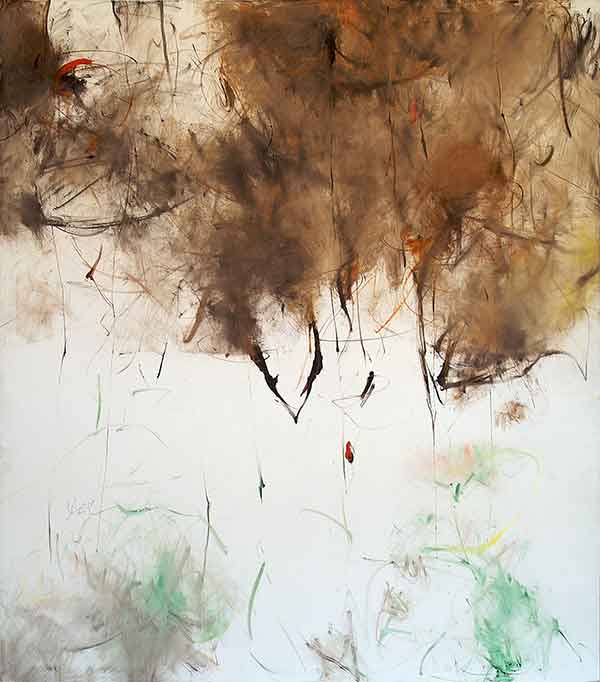
Farideh Lashai, Untitled (2008).
Image: Courtesy of the Tia Collection.
Lashai returns to realism at various times seemingly influenced by the vicissitudes of events in her life. I don’t know enough about her life or Iranian history to match up specific works to actual events, but a bold, even rather severe self-portrait from 1986 suggests a moment of intense self-reflection but also self-identification as an artist and social outsider. The artist depicts herself looking straight at the viewer, her face sad, thoughtful, and defiant with one of her earlier paintings visible in the background. She occupies most of the frame and comes across as a strong personality, a force to be reckoned with.
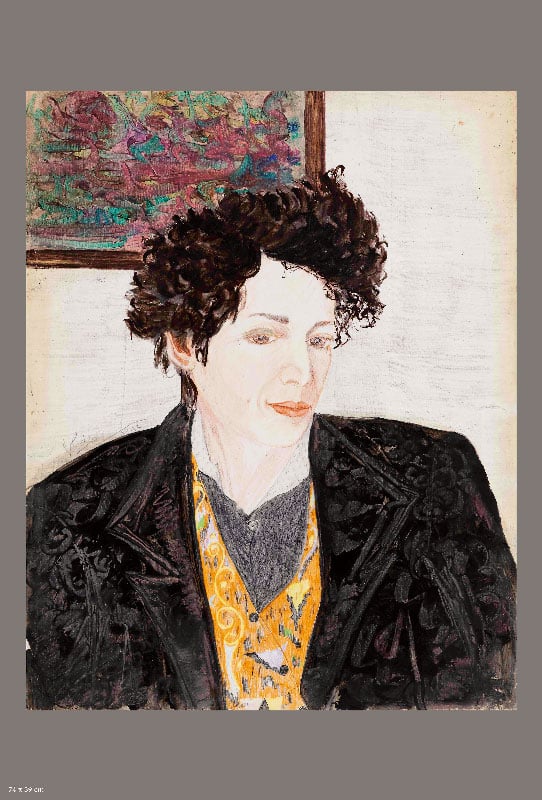
Farideh Lashai, Self Portrait (1986).
This portrait coincides in my view, as mentioned earlier, with an important moment in her career where she discovers her own voice as an artist. In an essay included in the literature for the show, writer Negar Azimi links the change in Lashai’s work in the mid 1980s to her return to Iran after years of exile, including a period spent in California. Iran was at war with Iraq at that time, and it is tempting to read the more expressive nature of her imagery as a reflection of those events. Her mother died in 1988; so again, she may also have been responding to this intense personal loss.
The later work tends towards Surrealism, which is probably understandable given that by the early 2000s Lashai was battling cancer and facing her mortality, but much more importantly because Surrealism so neatly combined and encompassed her lifelong passion for literature, poetry, and art. Personal issues and concerns once again tend to be a determining influence on the imagery, suggesting an introspective artist who made art and wrote literature primarily as a means of personal expression and not really as social or political commentary. To encounter her work is to enter her life and mind.
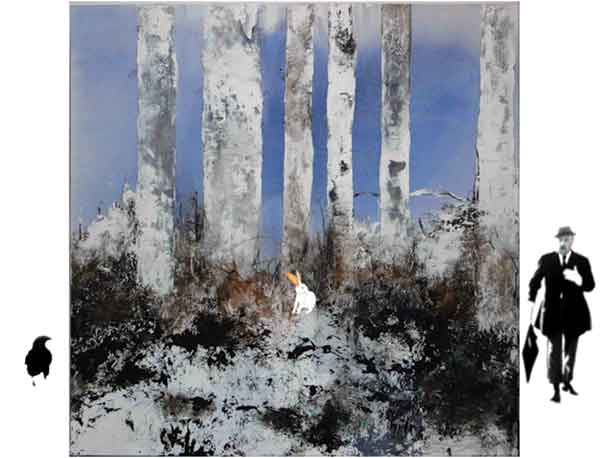
Farideh Lashai, I Come from the Land of Ideology (2010).
Image: Courtesy of the Edward Tyler Nahem Collection, NY.
The Tehran Museum of Contemporary Art is an inverse version of Frank Lloyd Wright’s Guggenheim Museum in New York, the galleries spiraling downwards (as opposed to upwards) into the ground. The design is hard to navigate and lights are in short supply, though it’s a big, quiet space with enough flexibility to show off a variety of artwork in all mediums. Lashai’s art looks good in here and overall the show makes a wonderful, very positive statement about the commitment of the museum to programming the best, most challenging international and local modern and contemporary art.
“Farideh Lashai: Towards the Ineffable” is on view at the Tehran Museum of Art in Tehran, Iran, through February 26.
